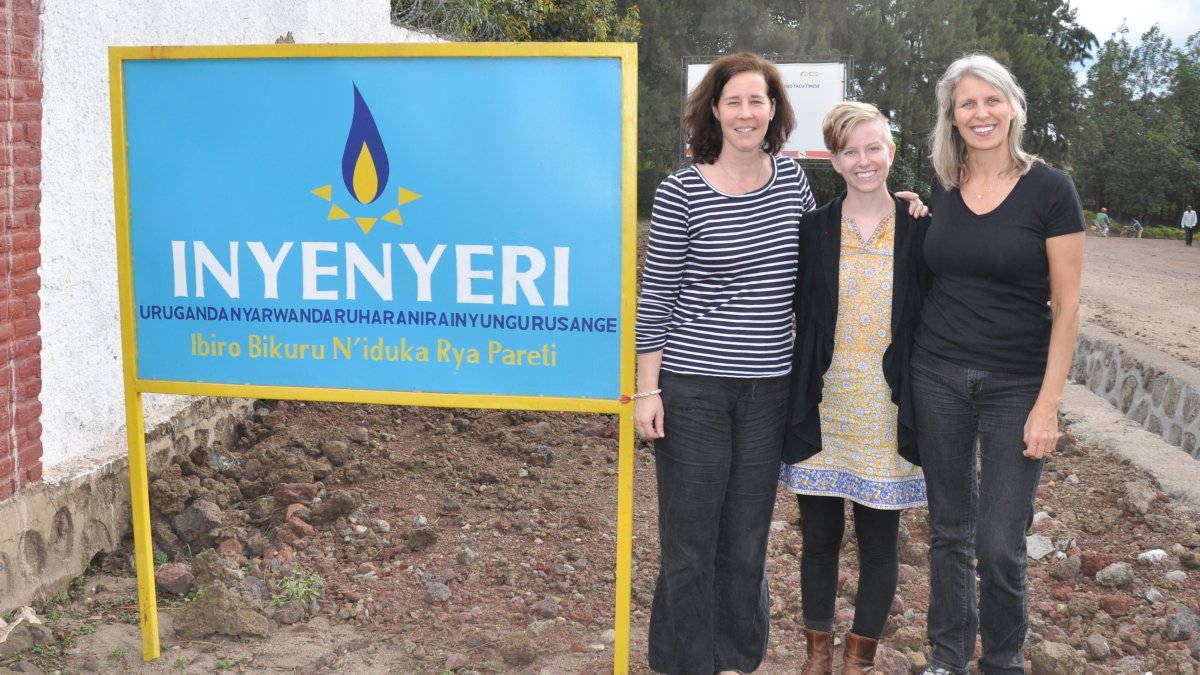Seeking a safer way to cook in developing countries
Think of the health impact this way: The smoke from cooking with a three-stone fire or charcoal stove exceeds the toxicity of smoking hundreds of cigarettes per day.

Public policyprofessors Ashu Handa and Pam Jagger in UNC’s College of Arts and Sciences have received a $2.5 million National Institute of Environmental Health Sciences grant to fight a very serious, but understudied health problem in sub-Saharan Africa. Exposure to cookstove smoke from burning fuels such as wood and charcoal is the largest risk factor for disease and death in Rwanda.
Think of the health impact this way: The smoke from cooking with a three-stone fire or charcoal stove exceeds the toxicity of smoking hundreds of cigarettes per day. Women and children are the most affected, because cooking and fuel collection remain largely their responsibility.

A woman wearing personal exposure monitoring equipment that kept track of her exposure to cookstove smoke in Kasumgu, Malawi.
The duo teamed up with Megan Strickland, a 2011 public policy graduate, to write the grant proposal. Until November 2014, Strickland worked for Inyenyeri, a company based in Gisenyi, Rwanda, that leases high-tech, energy-efficient cookstoves at an affordable cost of $7 per year to urban customers who agree to buy the company’s clean biomass fuel pellets. Rural customers can use the stove for free in exchange for collecting the raw materials used to manufacture the fuel pellets.
“The bottom line is it’s very hard to get people to change their cooking behavior,” Jagger said. “We are trying to understand what motivates adoption of the cookstoves. … Changing behavior has both benefits and costs.”
Inyenyeri, Strickland said, is a Kinyarwanda word that means “star” or “shining light.”
To keep reading, see the story at the College of Arts and Sciences.




